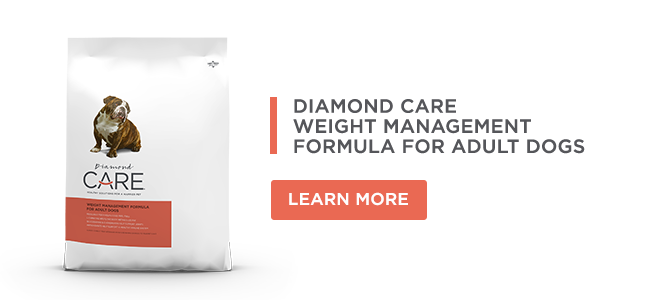For people, losing weight is one of the most common New Year’s resolutions. But their success rate for achieving that goal is pretty abysmal. So is it any wonder that it can be difficult to help our dogs shed pounds, too?
Yet trimming excess weight is one of the best things you can do for your dog. It can reduce your dog’s risk for diabetes, skin issues, kidney dysfunction and other health conditions.1 By relieving the stress that extra weight puts on joints, you can reduce the chance of painful, torn ligaments and slow the progression of arthritis. Better yet, keeping your dog lean can actually extend his or her life span.2
But your dog, like many people, may benefit from a more formal weight loss and exercise program. Called “fat camps” in ’80s movies, weight management rehabilitation programs may actually give your dog the edge they need to safely lose the weight and improve fitness once and for all.
Finding the right program
Many doggy day cares and boarding facilities now offer these camps, which may include exercises such as swimming, walking and playing with other dogs. But these programs typically don’t have trained veterinary rehabilitation therapists and specialized equipment like the rehabilitation programs typically associated with veterinary teaching hospitals.
Your veterinarian can steer you to the right program for your dog. Whether it’s a 2- to 4-week inpatient program or an outpatient program, where the dog lives at home but visits the facility for regular workouts, it’s important to have veterinary oversight to make sure exercise and weight loss isn’t drastic, but healthy and safe.
What dogs benefit?
Pooches that need to lose a significant amount of weight are the best candidates for these programs. You also might consider this if your pup has underlying medical conditions, such as arthritis or a collapsing trachea, which can make exercise painful or challenging. And couch surfers who are out of shape and lacking stamina could use the expert attention to get them back in shape.
What makes a successful program?
Most canine weight management rehabilitation programs, such as Auburn University’s “Club Chub,” are tailored to the individual dog and include several facets:
- A veterinary medical evaluation. The dog should be evaluated to determine its physical condition and ideal weight. Testing may be necessary to learn if there are underlying conditions, such as hypothyroidism (low thyroid hormone), that may contribute to weight gain or if there are other issues, such as arthritis or heart disease, which may impact the dog’s exercise plan.
- Medications, if necessary. Treatment for underlying conditions, such as pain medication for dogs with arthritis, can help make it easier for them to participate in an exercise program.
- Nutrition. Typically, the veterinarian will evaluate your dog’s current diet and recommend a food and feeding amount that will encourage weight loss while making your dog feel satiated. At the same time, the whole family needs to commit to supporting your dog’s healthy eating habits.
- Controlled workouts. Therapists will tailor an exercise plan that may include swimming, walking and therapeutic exercises. Typically, the program starts slow and gradually increases in length or intensity as your dog’s strength, metabolic rate and endurance improve. Often, underwater treadmills are used because the warm water relaxes muscles and provides buoyancy to take excess weight off joints. The therapists can also teach you exercises to help your dog at home.
- Regular progress checks. It’s important to regularly assess progress and make adjustments to the program as needed to help your dog reach their ideal weight. As your dog loses weight, you may see other improvements as well, such as a higher energy level and greater mobility and flexibility.
Of course, good eating habits and regular exercise shouldn’t end when your pet reaches that weight goal. Keeping your pet lean is the one of the best ways to make sure you have more years with your favorite furry companion.
RELATED POST: LEADING VETERINARY GROUP AGREES PET OBESITY IS A DISEASE
1 Brooks D, Churchill J, Fein K, et all. 2014 AAHA weight management guidelines for dogs and cats. American Animal Hospital Association website. Available at: https://www.aaha.org/globalassets/02-guidelines/weight-management/2014-AAHA-Weight-Management-Guidelines-for-Dogs-and-Cats. Accessed November 17, 2020.
2 Kealy RD, Lawler DF, Ballam JM, et al. Effects of diet restriction on life span and age-related changes in dogs. J Am Vet Med Assoc. 2002; 220(9): 1315-20.








